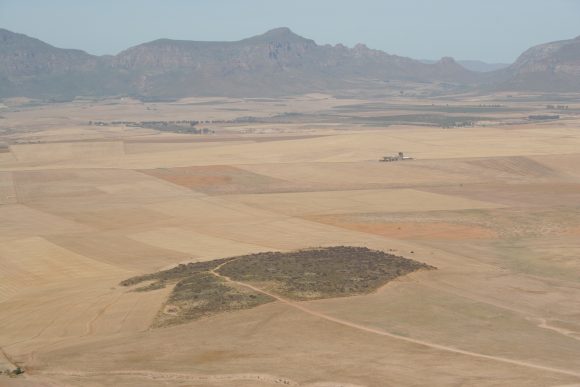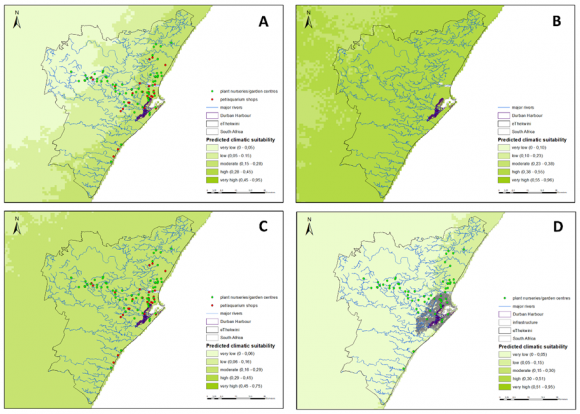4 September 2018 | By Luke Potgieter
Factors related to human safety and security are most important when prioritising areas for invasive alien plant (IAP) management across the Cape Town metro. This was the surprizing finding of a study by C·I·B PhD student, Luke Potgieter, and a multi-disciplinary team including C·I·B core team members Dave Richardson and Mirijam Gaertner, CSIR researcher Patrick O’Farrell, and project managers at the City of Cape Town’s Green Jobs Unit. The study, which identifies high-priority sites for IAP management at landscape- and local scales, was published in the journal Environmental Management.
Alien plant invasions in urban areas have considerable impacts on biodiversity, ecosystem services, and human well-being. Managing urban plant invasions is needed to alleviate such negative impacts. However, effective management is particularly challenging given the complex interactions between ecological, economic and social elements that exist in the urban milieu. Conflicts of interest frequently arise when attempting to control and eradicate IAPs as urban residents perceive IAPs and their management both negatively and positively. Managing urban plant invasions therefore requires a strategic approach to guide management across the urban landscape, and a tactical approach to plan and coordinate control efforts on the ground. Prioritising land parcels for invasive species control assists with funds being appropriately allocated and utilised, resulting in the highest return on investment being achieved.

Potgieter and colleagues used multi-criteria decision tools to develop a prioritisation framework for managing IAPs in urban areas at landscape and local scales. A stakeholder workshop was held to develop and rank criteria for prioritising IAP management in the City of Cape Town, South Africa. By matching spatial data with selected criteria and applying their multi-criteria decision analysis in a Geographic Information System, they developed a strategic landscape-scale prioritisation map. They also modified an existing IAP management framework to develop a tactical (site-level) prioritisation scheme for guiding on-the-ground control operations.
Their study identified high-priority areas for IAP management at landscape- and local scales across the City of Cape Town. Factors related to safety and security (such as fire risk to infrastructure, risk of flooding, and areas at risk of being illegally occupied) emerged as key features for setting spatially-explicit priorities for IAP management. The overall approach resulted in an intuitive framework for dealing with the complexities involved in decision-making processes in urban environments.
“The process followed here has established a set of clear, transparent and agreed priorities which can be used to guide the allocation of limited funds” says Potgieter. “Our dual prioritisation approach can be tailored to address different IAP management objectives specific to other urban centres around the world.”
Read the full papers at:
For more information, contact Luke Potgieter at lukepotgieter2@gmail.com



